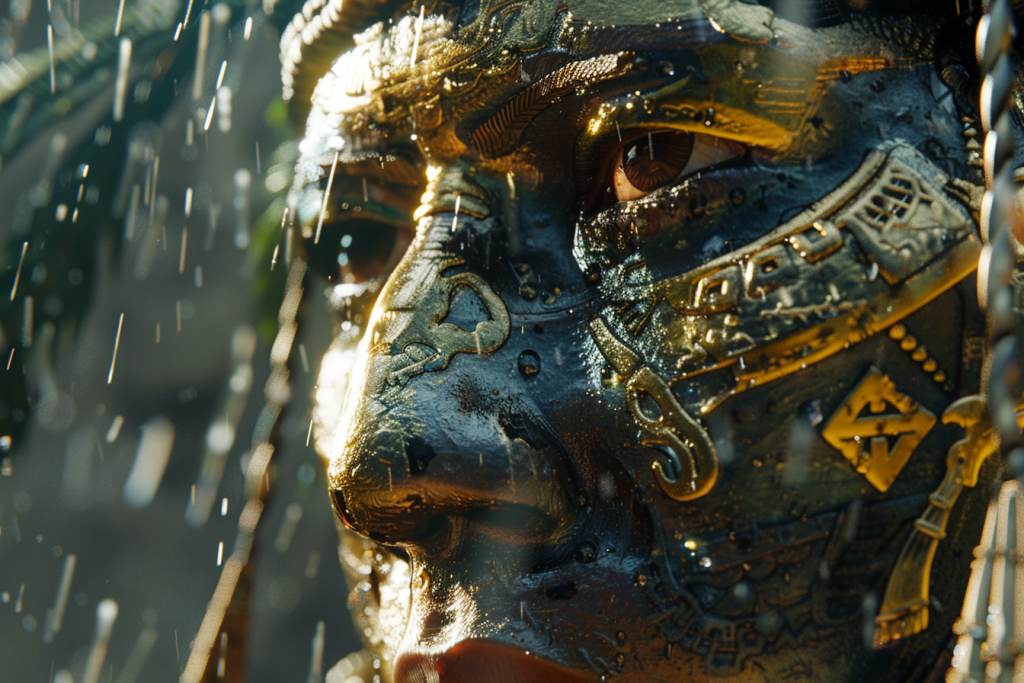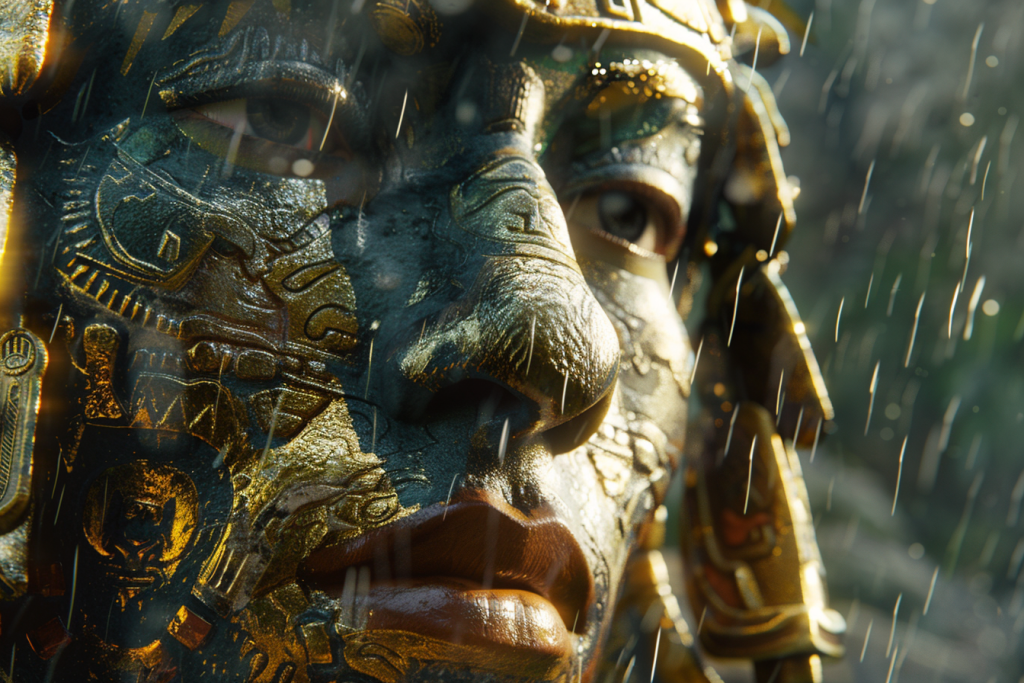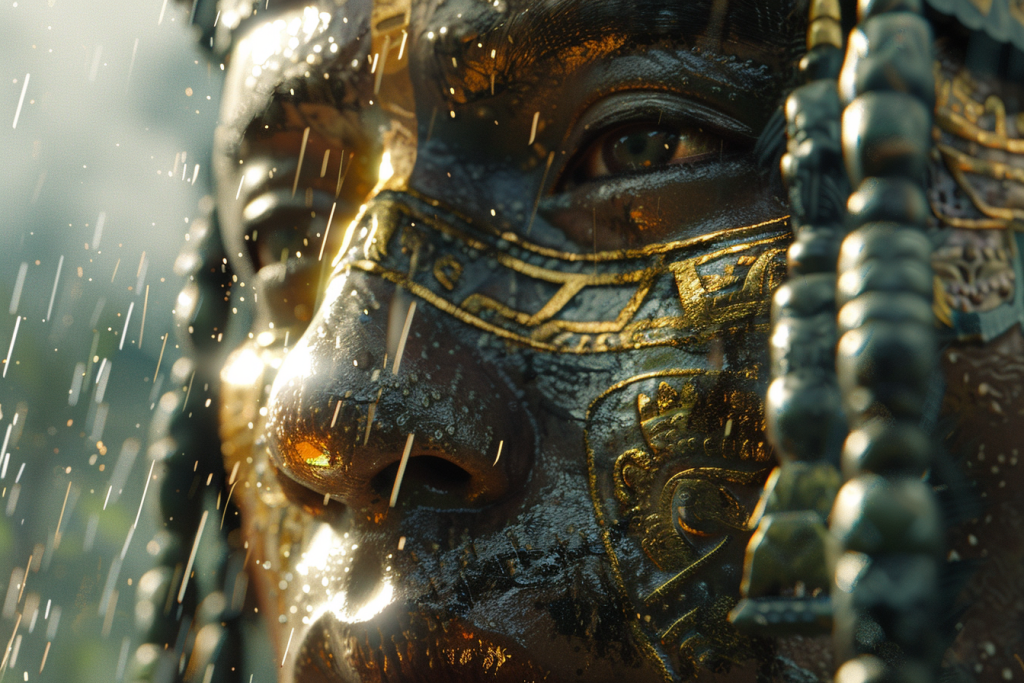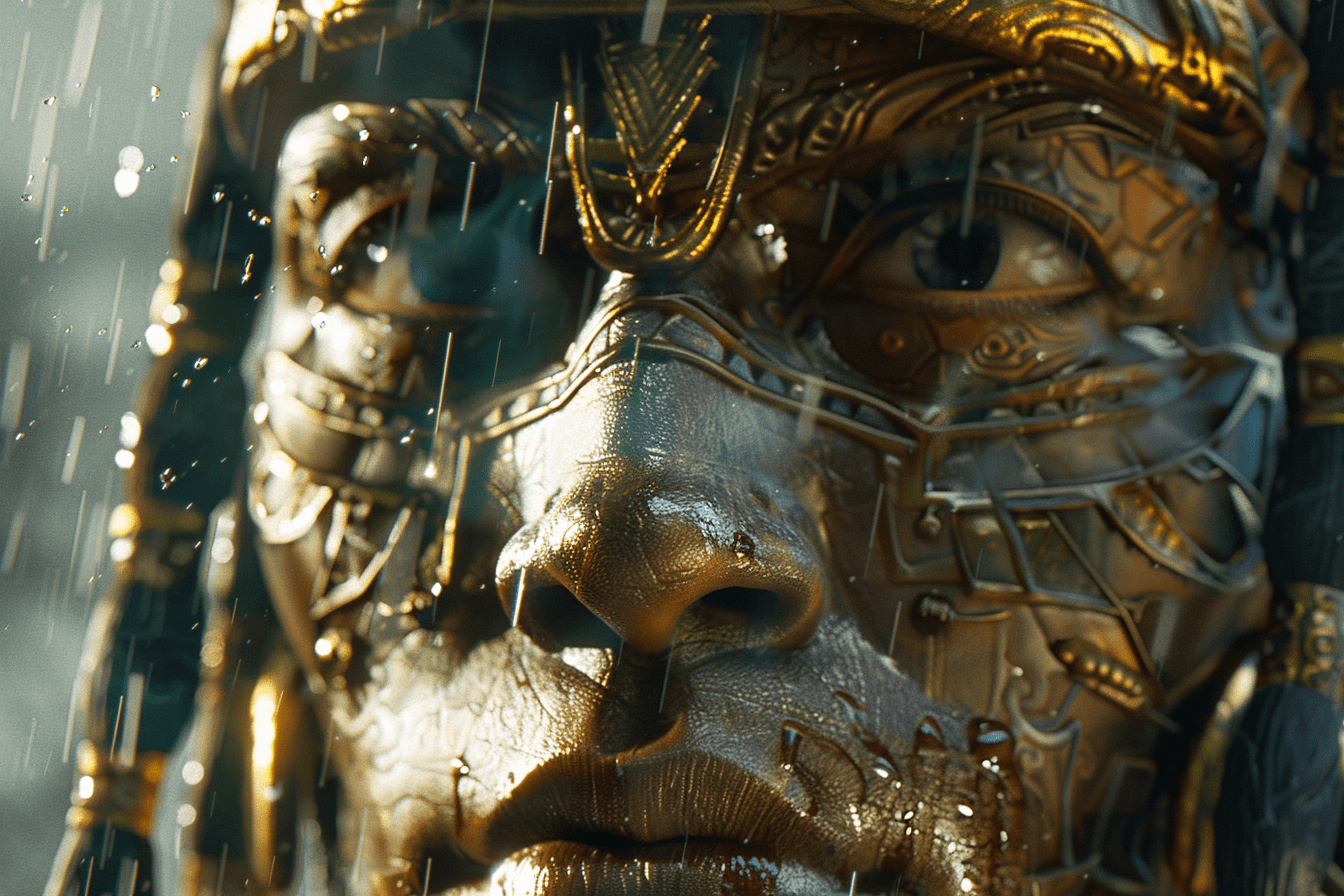Historical Significance
Chaac is a pivotal deity in the pantheon of the ancient Maya civilization, revered as the god of rain, lightning, and thunder. His significance is deeply rooted in the agricultural society of the Maya, where water was a crucial resource for survival and prosperity. Chaac’s role extended beyond mere meteorological phenomena; he was a guardian of fertility and growth, embodying the life-giving aspects of water.
Get your dose of History via Email
Role in Mayan Mythology
In Mayan mythology, Chaac is often depicted as a complex deity with a dual nature, embodying both the benevolent provider of rain and the fearsome bringer of storms and floods. His role is multifaceted, involving the maintenance of the balance between the forces of nature and the well-being of the Maya people. Chaac’s influence is evident in various mythological narratives where he interacts with other deities and the mortal world to ensure the continuity of life and the cycles of nature.
Depictions and Symbols
Chaac is commonly depicted in Mayan art as a reptilian creature with human characteristics, often wielding an axe or a lightning bolt, symbolizing his power over thunder and rain. His representations can be found in various forms, including statues, bas-reliefs, and paintings, where he is shown with distinctive features such as serpentine fangs, a long, curling nose, and sometimes multiple faces. Symbols associated with Chaac include water lilies, shells, and jade, alluding to his connection with water and fertility.

Chaac in Mayan Religion
Worship and Rituals
The worship of Chaac was integral to Mayan religion, involving elaborate rituals and ceremonies to appease the rain god and ensure a bountiful harvest. Priests and shamans played a crucial role in these rituals, performing dances, prayers, and sacrifices to communicate with Chaac and solicit his favor. The ceremonies often coincided with the agricultural calendar, marking critical periods such as the planting and harvesting seasons.
Temples and Sacred Sites
Several Mayan temples and sacred sites are dedicated to Chaac, reflecting his importance in the religious landscape of the ancient Maya. These structures are typically located in areas with significant water features, such as cenotes (natural sinkholes) and rivers, symbolizing Chaac’s domain over water. The architecture of these temples often incorporates motifs and carvings depicting Chaac, serving both a religious and an artistic function.
Offerings and Sacrifices
Offerings and sacrifices were a vital aspect of the worship of Chaac, intended to appease the deity and secure his blessings. These offerings could range from simple gifts of food and flowers to more elaborate sacrifices, including animals and, in some instances, human beings. The nature and scale of the sacrifices were determined by the needs of the community and the severity of the circumstances, such as droughts or floods.

Tales of Chaac
Origin Stories
The origin stories of Chaac vary across different Mayan communities, but they commonly portray him as a primordial being associated with the creation of the world and the establishment of the natural order. In some narratives, Chaac is described as emerging from the chaotic waters of the underworld to bring rain and fertility to the earth, highlighting his role as a creator and sustainer of life.
Adventures and Exploits
Mythological tales of Chaac often depict his adventures and exploits, involving battles with other deities, quests to obtain sacred objects, and interventions in the affairs of mortals. These stories illustrate Chaac’s power and his pivotal role in maintaining the balance of the natural world, as well as his interactions with other members of the Mayan pantheon.
Relationships with Other Gods
Chaac’s relationships with other gods in Mayan mythology are complex and multifaceted, reflecting the interconnectedness of the divine realm. He is often associated with other deities related to water, fertility, and agriculture, such as the maize god and the goddess of the earth. These relationships underscore the collaborative nature of the gods in sustaining life and ensuring the prosperity of the Maya people.
Symbolism of Chaac
Rain and Fertility
Chaac is intrinsically linked to the symbolism of rain and fertility, representing the life-giving and nourishing aspects of water. Rain is seen as a divine blessing from Chaac, essential for the growth of crops and the replenishment of the earth. This symbolism is deeply embedded in Mayan culture, where water is revered as a sacred and vital resource.
Thunder and Lightning
The phenomena of thunder and lightning are emblematic of Chaac’s power and wrath, symbolizing his control over the elements and his ability to bring both nourishment and destruction. These natural events are interpreted as manifestations of Chaac’s presence and activity, reminding the Maya of the deity’s dual nature and the need to maintain a harmonious relationship with the divine.
Agriculture and Growth
Chaac’s association with agriculture and growth is a testament to his role as a guardian of the natural world and a provider of sustenance. The cycles of planting and harvesting are closely linked to Chaac’s favor, with rituals and ceremonies conducted to ensure his blessings on the crops. This symbolism highlights the dependence of the Maya on the natural world and the divine forces that govern it.
Chaac in Mayan Society
Influence on Agriculture
The influence of Chaac on Mayan agriculture cannot be overstated, as his blessings were considered essential for a successful harvest. The agricultural practices of the Maya were deeply intertwined with the worship of Chaac, involving rituals and ceremonies to invoke his favor and ensure the fertility of the land. The reliance on Chaac’s benevolence reflects the broader significance of water and fertility in Mayan culture.
Seasonal Ceremonies
Seasonal ceremonies dedicated to Chaac played a crucial role in the agricultural calendar of the Maya, marking important transitions such as the onset of the rainy season and the beginning of the planting period. These ceremonies were occasions for communal celebration and reverence, bringing together the community to honor Chaac and seek his blessings for the coming year.
Integration in Daily Life
The worship of Chaac was not confined to formal religious ceremonies but was integrated into the daily life of the Maya. Practices such as offering prayers before planting crops or invoking Chaac’s protection during storms were commonplace, reflecting the pervasive influence of the rain god in the everyday existence of the Maya people. This integration underscores the deep connection between the divine and the mundane in Mayan society.

Art and Iconography
Statues and Carvings
Statues and carvings of Chaac are prominent features of Mayan art, showcasing the deity’s significance and the artistic skill of the Maya. These representations often emphasize Chaac’s distinctive attributes, such as his serpentine features and the implements of thunder and rain. The craftsmanship involved in creating these works of art reflects the reverence accorded to Chaac and the desire to capture his essence in physical form.
Pottery and Artifacts
Pottery and artifacts bearing the likeness of Chaac or motifs associated with him are common in the archaeological record of the Maya. These items range from functional objects such as vessels and tools to ceremonial pieces used in rituals and offerings. The presence of Chaac’s imagery on these artifacts highlights his omnipresence in Mayan culture and the desire to invoke his protection and favor.
Modern Interpretations
Modern interpretations of Chaac continue to emerge, reflecting the enduring fascination with the rain god and his significance in Mayan heritage. Contemporary artists and scholars draw inspiration from the ancient depictions of Chaac, reimagining his image and role in various forms of media. These modern interpretations contribute to the ongoing dialogue between the past and the present, ensuring that the legacy of Chaac remains a vibrant and dynamic element of cultural memory.

